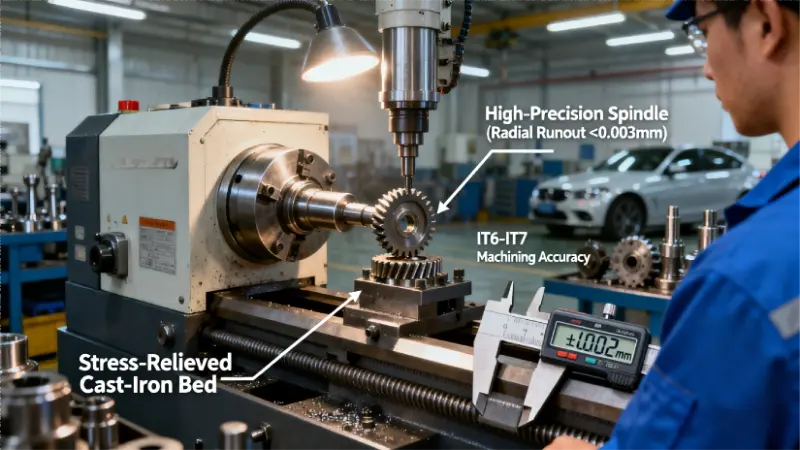What are the differences between vertical and horizontal machining centers?
Release time: 2025-11-20
Table of Contents
In modern manufacturing, machining centers are crucial machine tools widely used in various industries. Vertical and horizontal machining centers, in particular, play a vital role on many high-precision, high-efficiency production lines. Although both are CNC machine tools, their structures and applications differ, resulting in differences in operation, accuracy, and production efficiency. Topmade will detail the main differences between vertical and horizontal machining centers to help you choose the right machining equipment.
Structural Differences Between Vertical and Horizontal Machining Centers
A vertical machining center, as the name suggests, has a vertically arranged spindle and a horizontal worktable. This design makes vertical machining centers particularly suitable for machining smaller, regularly shaped workpieces, such as molds, tools, and small parts. Its simple structure and intuitive operation make it especially suitable for single-sided machining of parts.
In contrast, a horizontal machining center has a horizontally arranged spindle and a horizontal worktable. This layout makes workpiece clamping more stable, suitable for machining larger and heavier workpieces, such as automotive parts and aerospace components. Due to the structural characteristics of its spindle and worktable, high-precision horizontal machining centers exhibit higher efficiency when machining multiple surfaces or multiple workpieces simultaneously.
Machining Efficiency and Applicable Workpieces
In terms of machining efficiency, vertical and horizontal machining centers each have their advantages. Vertical machining centers, due to their compact structure, are ideal for small-batch precision machining. For machining relatively simple, single-sided parts, they offer high machining accuracy and low machining costs.
Horizontal machining centers, on the other hand, are more suitable for complex multi-sided machining, especially in mass production, where they can significantly improve production efficiency. Since workpieces do not need frequent flipping during machining, the machining time of horizontal machining centers can be greatly reduced, which is a significant advantage for industries requiring high-efficiency production, especially the automotive and aerospace industries.
Workpiece Clamping and Operation Ease of Use
Vertical machining centers are relatively simple to operate, making them particularly suitable for companies with high requirements for ease of operation. Because the spindle is vertical, workpieces can be easily clamped and adjusted during machining, making it particularly suitable for production environments requiring frequent workpiece changes.
In contrast, workpiece clamping on horizontal machining centers is relatively more complex, especially when machining larger parts, requiring greater consideration of stability and accuracy. However, horizontal machining centers typically have larger worktables and can accommodate multiple workpieces simultaneously, providing greater production flexibility for businesses.
Accuracy and Stability
Due to their smaller worktables, vertical machining centers are suitable for machining precision parts, and therefore typically exhibit excellent accuracy. Their simple structure and high rigidity effectively control errors during machining. Therefore, high-efficiency vertical machining centers generally perform better in machining workpieces with high precision requirements.
Horizontal machining centers, on the other hand, offer greater stability, especially when machining larger or heavier workpieces, maintaining better accuracy. Their larger worktables and lower center position effectively reduce vibration and errors during machining. Therefore, horizontal machining centers offer greater advantages in accuracy and stability for machining large parts.
Cost and Application Areas
Vertical machining centers, due to their simpler structure, are generally more affordable and suitable for small and medium-sized enterprises. They are commonly used in mold making, machining, and the production of some precision parts.
Horizontal machining centers, on the other hand, are relatively more expensive, but due to their high efficiency and greater stability, they are typically used in large-scale production lines, especially in aerospace, automotive manufacturing, and heavy machinery industries, where demand is high.
Summary
In general, vertical and horizontal machining centers each have their advantages and disadvantages. The choice depends on your production needs. If you mainly process small parts or require high machining accuracy, a vertical machining center is undoubtedly a good choice. However, if you need to process large parts or perform multi-faceted machining, a horizontal machining center will be a more ideal choice. Understanding their structure, function, application scope, and price differences will help you make the most suitable choice based on your specific needs. If you still have questions about vertical and horizontal machining centers, please feel free to contact Topmade.


